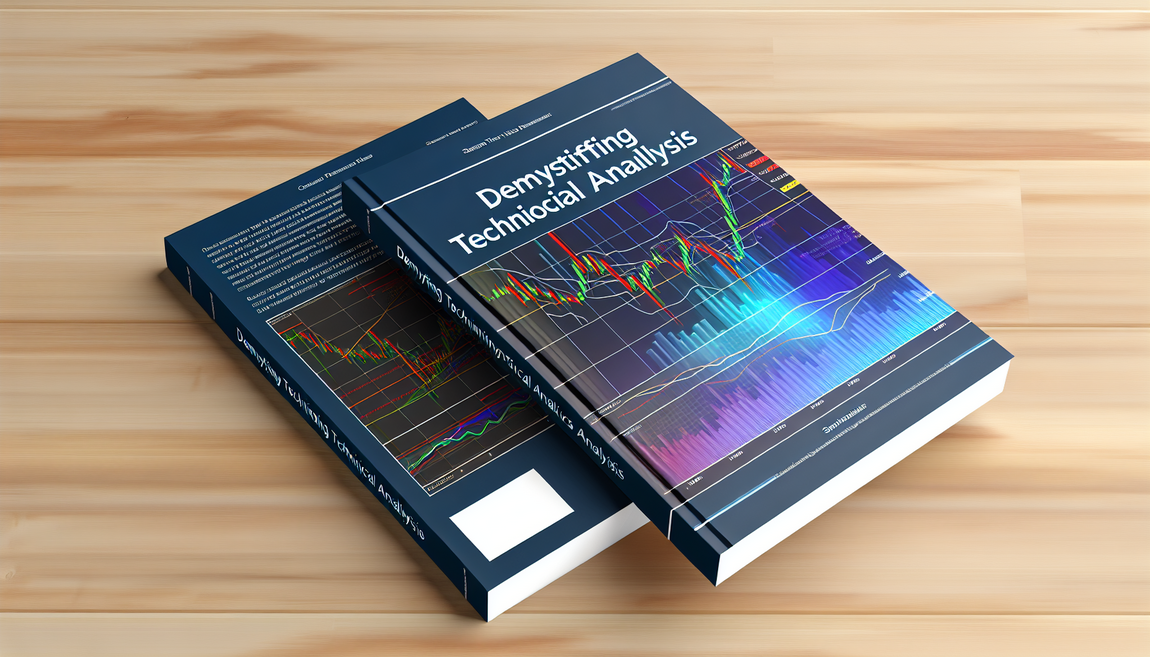
Demystifying Technical Analysis: A Beginner’s Guide To Chart Patterns And Indicators
“`html
Introduction to Technical Analysis: What It Is and Why It Matters
Technical analysis is a method used by traders and investors to evaluate securities by analyzing statistics generated by market activity, such as past prices and volume. It is grounded in the belief that all relevant information is already reflected in the price of securities and that historical price patterns tend to repeat themselves. This approach allows investors to make informed decisions based on trends and signals rather than on the fundamental health of the asset. The importance of technical analysis lies in its ability to help traders identify potential price movements, establish entry and exit points, and manage risk effectively.
By utilizing various tools and techniques, such as moving averages, trend lines, and indicators like the Relative Strength Index (RSI) and Moving Average Convergence Divergence (MACD), traders can grasp market sentiment and act accordingly. Understanding technical analysis is crucial for navigating the complexities of the financial markets, as it provides insights that can lead to more strategic investment decisions [Source: Superior Solution].
Exploring Common Chart Patterns: Recognizing Market Signals
Chart patterns are vital tools in technical analysis, helping traders predict future price movements based on historical data. Understanding these patterns can empower traders to make informed decisions.
- Head and Shoulders: This pattern indicates a reversal in trend and consists of three peaks: a higher peak (head) between two lower peaks (shoulders). An inverted version, the inverse head and shoulders, signals a potential upward reversal. The breakout typically occurs below the neckline after the right shoulder forms, suggesting a strong sell signal. The target price after confirmation can be calculated by measuring the distance from the head to the neckline and projecting that distance downward [Source: Investopedia].
- Double Top and Bottom: The double top is a bearish reversal pattern characterized by two peaks at roughly the same price level, indicating seller resistance at that price. Conversely, the double bottom indicates bullish reversal with two troughs. A breakout beyond the resistance level in a double top signifies a potential downward trend, while a double bottom breakout indicates upward momentum [Source: Investopedia].
- Triangle Patterns: Triangles come in various forms, including ascending, descending, and symmetrical triangles, representing consolidation before a breakout. Ascending triangles suggest bullish sentiment, while descending triangles indicate bearish sentiment. Traders watch for price movements that breach the triangle boundaries to confirm their trade direction [Source: Investopedia].
Understanding these common chart patterns enhances a trader’s ability to recognize potential market signals and adjust their strategies accordingly. For more insights into technical analysis, consider reading our article on Demystifying Technical Analysis.
Essential Technical Indicators: Tools for Better Market Predictions
Understanding and leveraging technical indicators can significantly enhance market predictions and trading strategies. Here’s a breakdown of some essential indicators that traders frequently use:
- Moving Averages (MA): Moving averages smoothen price data over a specific period, making trends easier to identify. There are two primary types: the Simple Moving Average (SMA) and the Exponential Moving Average (EMA). The SMA averages prices over a set period, while the EMA gives more weight to recent prices. Traders often use MA crossovers for potential buy or sell opportunities [Source: Superior Solution].
- Relative Strength Index (RSI): The RSI measures the speed and change of price movements, providing insights into overbought or oversold conditions. It ranges from 0 to 100, where values beyond 70 indicate overbought markets and below 30 suggest oversold conditions. Traders use RSI to identify potential reversals, looking for divergences between the RSI and price action [Source: Superior Solution].
- Moving Average Convergence Divergence (MACD): MACD indicates the relationship between two moving averages of a security’s price and includes the MACD line, signal line, and histogram. Traders monitor crossovers between the MACD line and the signal line for buy or sell signals [Source: Superior Solution].
- Bollinger Bands: Bollinger Bands consist of a middle band (the SMA) and two outer bands indicating volatility. When the price nears the upper band, it may signal overbought conditions; similarly, touching the lower band may indicate oversold conditions. Traders use the squeeze of the bands to anticipate price volatility [Source: Superior Solution].
Utilizing these essential technical indicators can provide traders with actionable insights to navigate market fluctuations and improve their decision-making processes.
How to Read and Combine Patterns with Indicators for Effective Analysis
An effective technical analysis strategy comes from combining chart patterns with technical indicators. For example, if a trader identifies a double bottom pattern that suggests a bullish reversal, they can confirm this signal by assessing the RSI. If the RSI value is below 30 when the breakout occurs, it may reinforce the bullish signal. Different patterns can also be combined with different indicators to enhance predictive accuracy. This holistic approach creates a more robust trading strategy and streamlines decision-making.
Practical Tips for Beginners: Avoiding Common Mistakes and Building Confidence
To successfully navigate the world of technical analysis, newcomers must be aware of common pitfalls and how to build confidence in their trading approach. Here are practical tips to assist beginners:
- Learn the Basics: Start by understanding the fundamental concepts of technical analysis, such as chart patterns, support and resistance levels, and key indicators. Resources like the Demystifying Technical Analysis can provide essential insights.
- Avoid Overtrading: One of the most common mistakes is overtrading due to emotional reactions. Implement a disciplined trading plan with clear entry and exit points to keep emotions in check.
- Implement Robust Risk Management: Define your risk tolerance before executing trades. Utilize stop-loss orders and invest a small percentage of your capital in any single trade to reduce exposure to potential losses [Source: Superior Solution].
- Keep a Trading Journal: Documenting trades—including the rationale and outcomes—helps identify patterns and improves decision-making over time.
- Stay Educated: Continuous learning is vital as market dynamics evolve. Engage with courses and trading communities to stay informed about the latest strategies and practices.
- Practice with Simulations: Utilize demo accounts or simulation platforms to practice different strategies without financial risk.
By following these guidelines, beginners can better navigate challenges, manage risks effectively, and build a solid foundation for successful trading endeavors.
Sources
- Superior Solution – Demystifying Technical Analysis: A Beginner’s Guide to Chart Patterns and Indicators
- Investopedia – Double Top
- Investopedia – Head and Shoulders
- Investopedia – Triangle Patterns
- Superior Solution – The Art of Risk Management: Safeguarding Your Investments in a Volatile Market
“`






